peaman
Sustaining Member
When the tools and supplies come out for maintenance projects, the dinette table seems like a convenient work surface. Having used various ad hoc covers for the table, I decided that convenience and style suggested that a custom cover was needed. The cover should be protective, utilitarian, and ideally, not too primitive, with a neat custom fit without unnecessary bagginess. My final product is shown below.
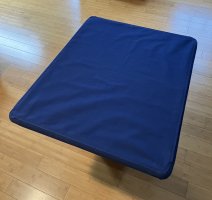
The top is fairly wrinkle-free, and will not shift. The surface is equally suitable for dinner plates and tool boxes.
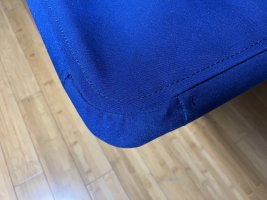
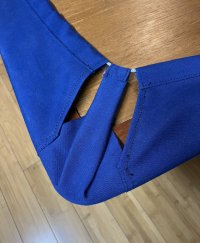
The corners were detailed to provide a neat and tight fit when deployed....
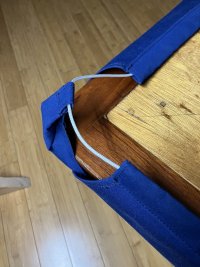
...but allowance needed to be made on the underside for easy removal. This detail called for considerable head scratching to avoid fussiness in getting a neat fit below.
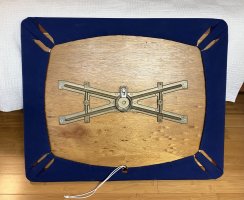
A nylon cord provides uniform tension along catenary curves at the cover edges.
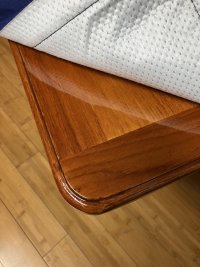
The top stitching was informed by the edge detail of the table itself. A non woven liner protects the table finish from scratches.
I'm pretty happy with the finished item, in spite of the enormous number of hours spent either thinking about or executing this thing. And it was good to get additional productive use of my Sailrite sewing machine.

The top is fairly wrinkle-free, and will not shift. The surface is equally suitable for dinner plates and tool boxes.


The corners were detailed to provide a neat and tight fit when deployed....

...but allowance needed to be made on the underside for easy removal. This detail called for considerable head scratching to avoid fussiness in getting a neat fit below.

A nylon cord provides uniform tension along catenary curves at the cover edges.

The top stitching was informed by the edge detail of the table itself. A non woven liner protects the table finish from scratches.
I'm pretty happy with the finished item, in spite of the enormous number of hours spent either thinking about or executing this thing. And it was good to get additional productive use of my Sailrite sewing machine.
